10,000 Moth Species and Still Counting
- Tags:
- Wildlife
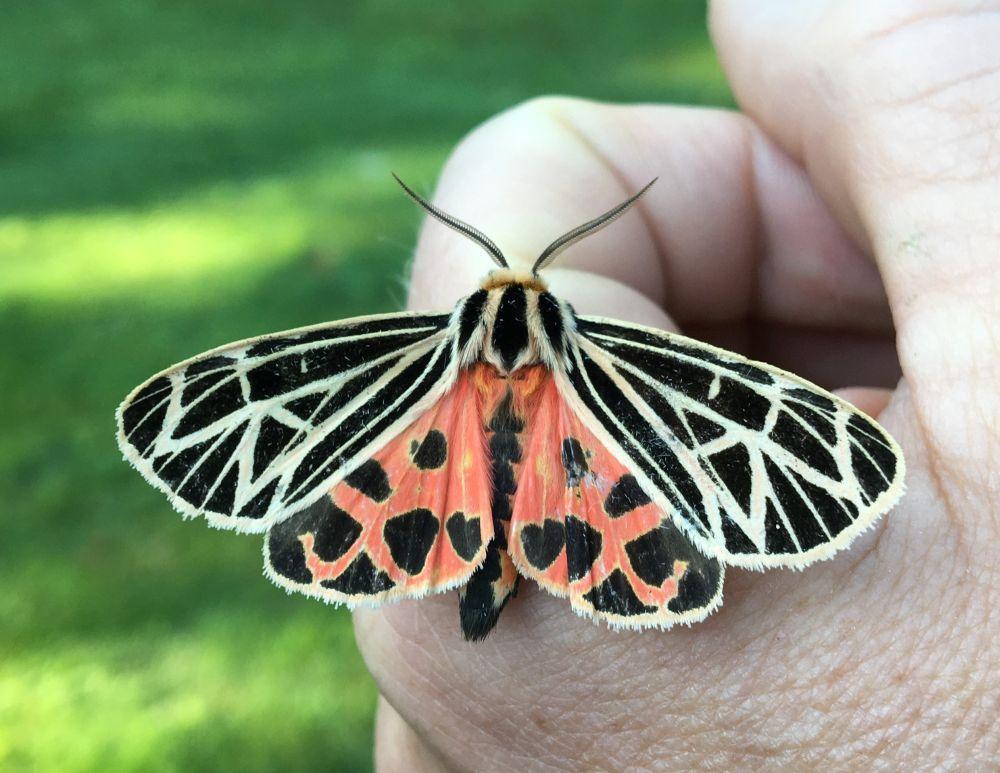
The virgin tiger moth (Grammia virgo) resembles a stained glass window or abstract modern art.
Everyone loves a butterfly. They’re brightly colored and graceful as they flit between blooms, daintily sipping nectar, productively pollinating, and just generally spreading happiness wherever they go. But I’m not going to try and convince you that butterflies are cool. I’m here to take you to the dark side, to the night-dwelling relatives of butterflies —ithe world of moths.
Most people think of moths, if they think of them at all, as bugs that are small and gray (at best) or slightly annoying (at worst). They fly erratically around your house if you leave the door open too long in the evening, and some species can make holes in your wool blankets or ruin your flour. But these closely related cousins of butterflies (they’re in the same order of insects, Lepidoptera) can be every bit as fascinating and beautiful as their day-flying relatives. To start with, moths are much more diverse and numerous than butterflies. We have somewhere around 700-800 species of butterflies in the US and Canada, but more than 10,000 species of moths, and scientists are still discovering undescribed moths in North America every year.
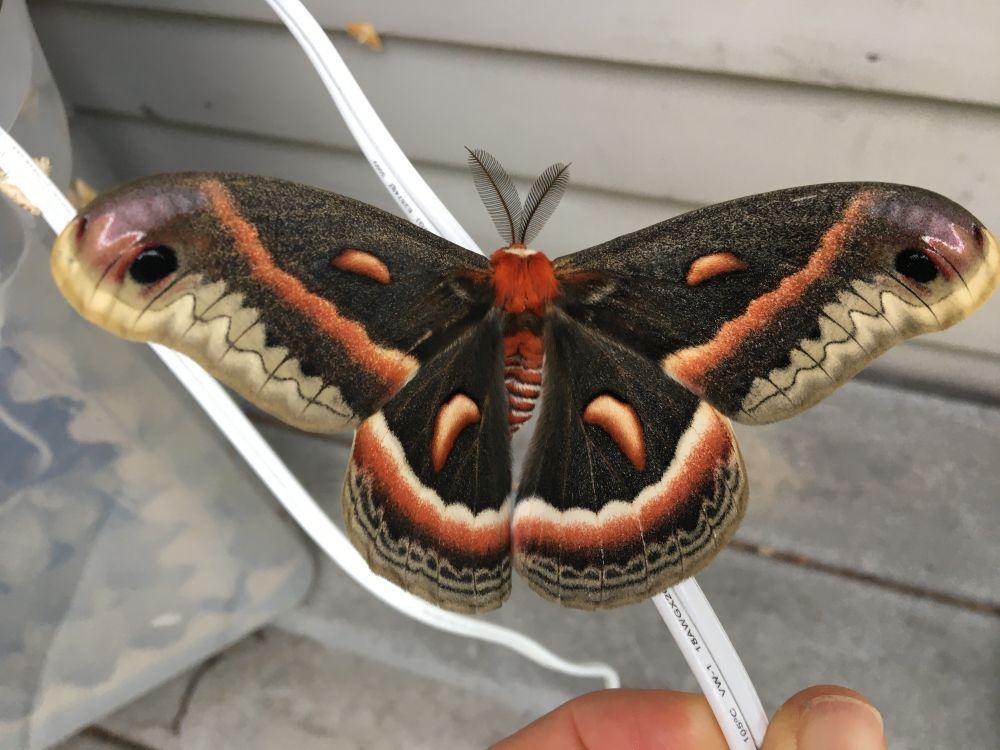
The moths we have here in New Hampshire range in size from the 5-7” Cecropia Moth (Hyalophora cecropia), fully as large as an adult hand, to “micromoths” so tiny that you’ll need a hand lens just to see that they are actually moths. The wings of moths can be intricately patterned with eyespots, stripes, zig zags and polka dots. Some, like the hickory tussock moth (Lophocampa caryae) or the virgin tiger moth (Grammia virgo) resemble stained glass windows or abstract modern art, while others have bodies so fuzzy they look like miniature stuffed animals. They haven’t evolved the vivid coloration of butterflies (not much incentive for animals active in very low light conditions) but softer greens, pinks and yellows are common and eye-catching.
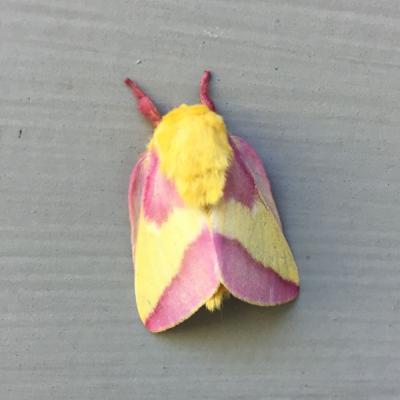
Like butterflies, moths are also important pollinators and a fundamental part of the food web at all of their life stages. But the best thing about moths is how accessible they are to anyone who is curious to discover more about them.
Moth exploration —i “mothing” as it is known among those who do it regularly —i is the perfect stay-at-home nature activity!
No leaping around meadows with nets is required, no jars of chemicals or even planting particular flowers as attractants. Just leave your porch light on all night. That’s it, and in the morning- voila! You will have moths to examine. If you want to get fancy, you can build a homemade moth trap out of a large tupperware tub, funnel and light fixture, or you can hang a white sheet outside in the evening and dangle a black light over it. Ultraviolet (UV) light does attract moths more readily than white light, so you can also buy a compact fluorescent blacklight for about $10 online and swap out your porch light to level up your mothing adventures.
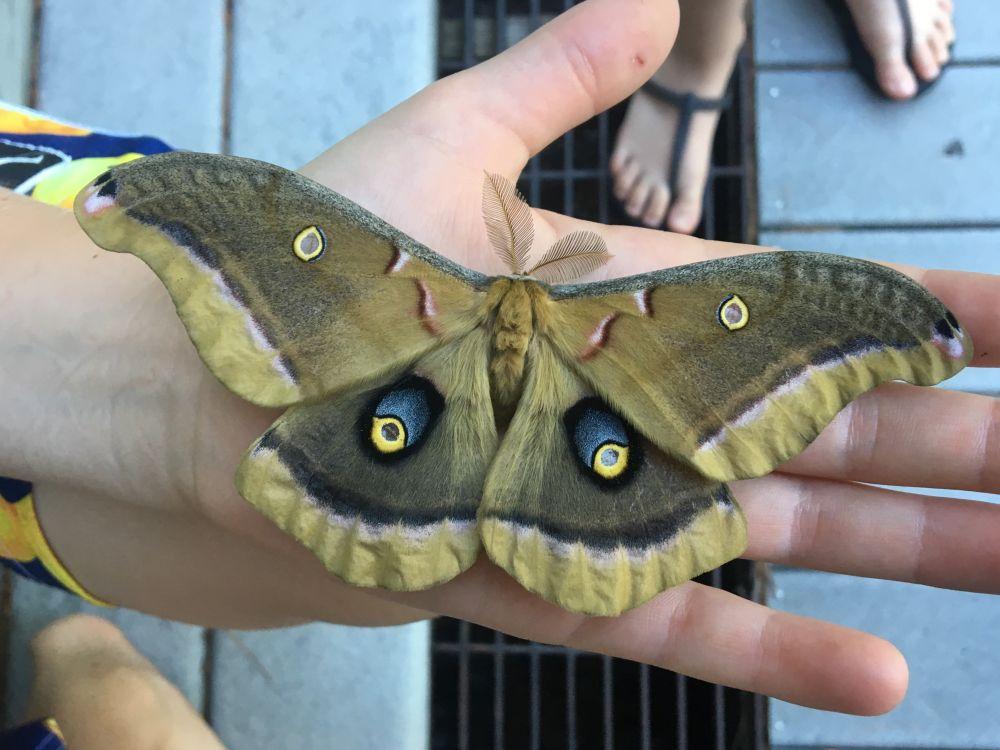
Because most moths are nocturnal, they are relatively calm in the morning when you find them stuck to the side of your house. Some can even be picked up and handled without flying away (typically the “chunkier” the moth, the more this is true) and don’t worry — they don’t bite! Some, like the giant silkworm moths (Luna, Polyphemous, and Cecropia moths are examples) don’t even have functioning mouthparts as adults. Their mission as adult moths is only to find mates and reproduce.
This spring was so productive for Luna moths (Actias luna) that moth enthusiasts in some areas of New Hampshire reported dozens of lunas attracted to their lights on some nights.

If you are interested in identifying the moths you attract, there are several excellent resources available to assist you. One of the best field guides for our area is the Peterson Field Guide to Moths of Northeastern North America, by David Beadle and Seabrooke Leckie. As you might expect, there are also apps for moth identification. My favorite is one called “Leps by Fieldguide” that is available for free in both iOS and Android versions. Just snap a photo of the moth on your mobile device (easy to do since moths are so cooperatively photogenic in the daytime) and the Leps app will return the most likely matches. It might be a confused haploa (Haploa confusa) or a dubious tiger moth (Spilosoma dubia). It could be an owl-eyed bird-dropping moth (Cerma cora), a sordid snout (Hypena sordidula) or a delightful dagger (Acronicta vinnula). Or the slowpoke (Athetis tarda), the joker (Feralia jocosa), the brother (Raphia frater) or the old maid (Catocala badia). Did I mention lepidopterists seem to have an interesting sense of humor?
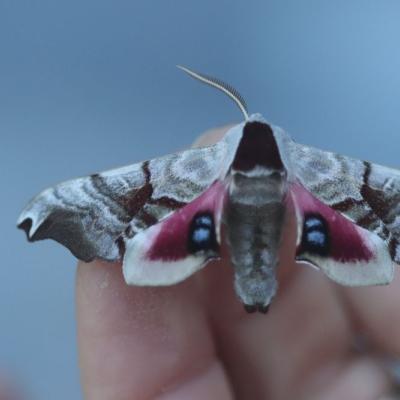
While you may never be able to rattle off the thousands of scientific names of every moth you see, when you get familiar with them you can usually identify the family that the moth is in just by its basic shape. Is it a plume moth, a pug, or a dagger? A sphinx or a ghost moth?
To find out, you’ll have to join me… on the dark side!
